"Too much forward pelvic tilt will limit our hip motion, potentially cause hip impingement, and/or force our low backs to round into the catch."
0 Comments
Rowers are really good at putting in the time and effort. What rowers often miss, is the fact that you not only have to outwork your opponents, you have to outsmart, and out-recover them as well. Train hard, but make sure your body is ready for it. Train hard, but avoid pushing yourself beyond what you can recover from. Athletes, are you training harder than usual? Place extra focus on your movement quality & recovery, this will allow you to handle more training stress. Coaches, are your athletes run down and under-performing? Are they stressed out from school or some other outside stressors? Giving them the day off may be your best option. The simple truth is that staying healthy is the easiest way to improve performance. The rowers who can perform at the most practices have more opportunities to improve. The rowers who have to take weeks off at a time, suffer. Do what you can to keep yourself/your athletes healthy and you will see progress. More Quality Practice = Better Performance What are you doing to stay healthy and available for every single practice? What are you doing to keep your team healthy? Rule #1: Reduce injury potential No one can prevent injury. Injuries happen. It is possible however, to reduce the chance of an injury from ever occurring in the first place. As coaches, we need to accept that injuries that occur during our watch are partly our fault. This is especially important in a sport that only has three injury mechanisms, all of which are under our control. We should be looking to reduce injury potential during training, and during competition. Finding the right training program will keep your athletes healthy at practice, and make them more robust for competition. Rule #2: Improve Performance The other part of course, is to increase performance. Prioritize safe, progressive training, but make sure that it's effective. Think about the risk/benefit ratio and let it guide your decision making. Think, what is the minimal effective dose? How can I get my athletes as fast as possible in the least amount of time? How can I do so without hurting them? Anytime you can load someone less (with weight or volume) and still get the same benefit, the better. Do not confuse the term less, with lazy. This is not lazy, this is not easy. Sometimes doing less actually results in better performance. Do you put your athlete’s health first? Do you take responsibility for your own health? Although injury rates are high, fortunately, there are only 3 ways to get injured in rowing (excluding a freak accident or a serious crab). 1) Over-use or Under-recovery (training error) 2) Technical error 3) Movement Limitations Since rowing is a non-contact sport we have a lot of control over all 3 mechanisms listed above. Lucky for us, we don’t have to deal with contact injuries such as ACL tears and concussions that are so prominent in other sports. The only way you can truly keep a football player safe is by keeping him on the sideline. We, on the other hand, can reduce the chance of all injuries from ever even occurring in the first place. All we have to do is make injury reduction a priority. Over-use or Under-recovery is a training error. We did too much too soon, or we didn’t do enough to recover in time. We have control over this. Technical errors are our responsibility. There’s no reason to repeat a technical error under-load. We have control over this. Movement Limitations can be identified and cleared. We have control over this. Have you experienced a rowing injury? Does it fall into one of these categories? Injuries, like mine, are far too common in the sport of rowing. Yet the biggest issue is that these rates are accepted as normal in the sport. Every season athletes get injured and not much effort seems to be put into avoiding these injuries. As Mike Boyle has said, coaches treat the sport as a "survival of the best bone and connective tissue contest, a twisted take on the survival of the fittest theory. Those who don't get injured by the volume of training survive to compete”. All too often this mentality creates an environment where rowers are pushed to the point of injury and often through injury. Injuries in rowing are NOT normal. We can no longer assume injuries are just a part of the process. We have to be better. We have to change our mindset. Have you accepted injuries as normal? What would happen if we valued health, just as much as performance? It’s no surprise to any rower that rowing places extreme demands on its participants. The movement itself, the intensity, the technique required, and the traditional approach to training makes injuries a common occurrence. Studies have found that 32-51% of rowers will experience an injury each year. When it comes to back pain, 82% of rowers report pain annually (2).
So, is that just the nature of the sport? Is there no way to get around these numbers? What most people don’t realize is that we are completely capable of flipping the switch on these numbers. What are you doing to keep you athletes/yourself healthy? If you want to design a safe and effective training program use the 2 essential rules listed below as guidance. Do your best to make them your priority and keep them in order. Remember, an injured athlete can't improve, or perform.
In the sport of rowing injury rates are staggering. I've read figures that range from 30%-70%. This means that at least one in every three rowers will find themselves without a seat. Yet the biggest issue is that these rates are accepted as normal in our sport. Every season athletes fall to injuries and the cycle repeats itself year after year. The simple truth that is commonly overlooked is that keeping our athletes healthy is the easiest way to improve performance. If our athletes are healthy then they have more time to train and thus more time to respond to training adaptations. More importantly, we then allow our athletes to live their lives without dealing with the consequences of a serious injury.
The truth is that there are only 3 ways to get injured from rowing (excluding any freak accidents or a serious crab). |
Author
Blake Gourley holds a Masters of Science in Sports Performance Training and has over 12+ years of experience working with rowers. Read more Categories
All
Archives
August 2023
|
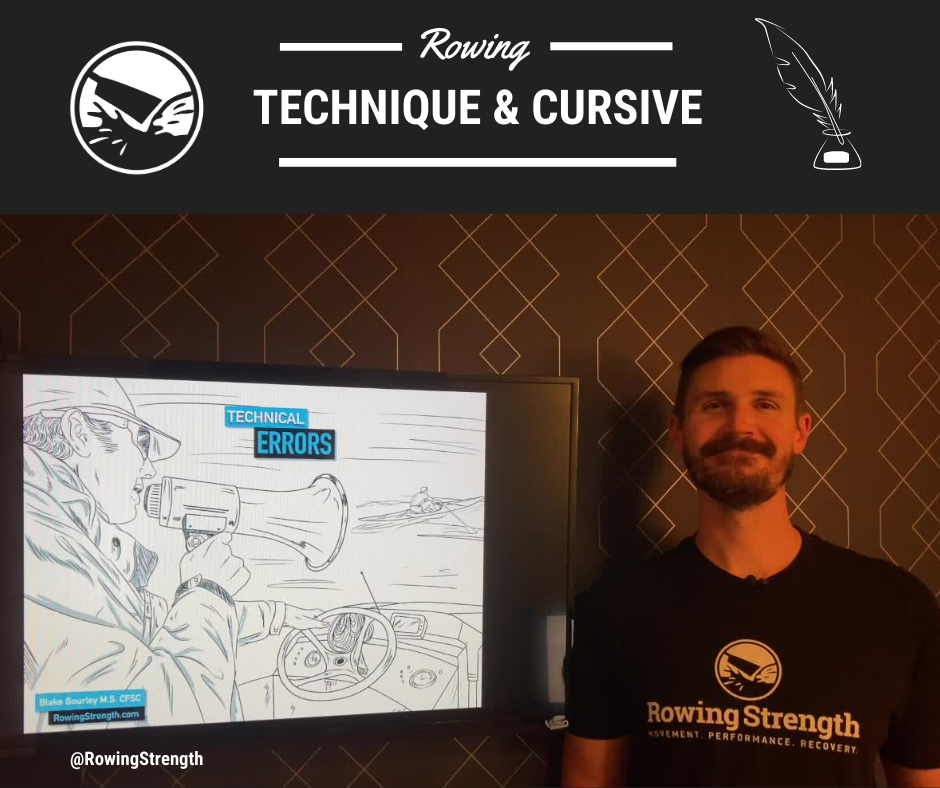
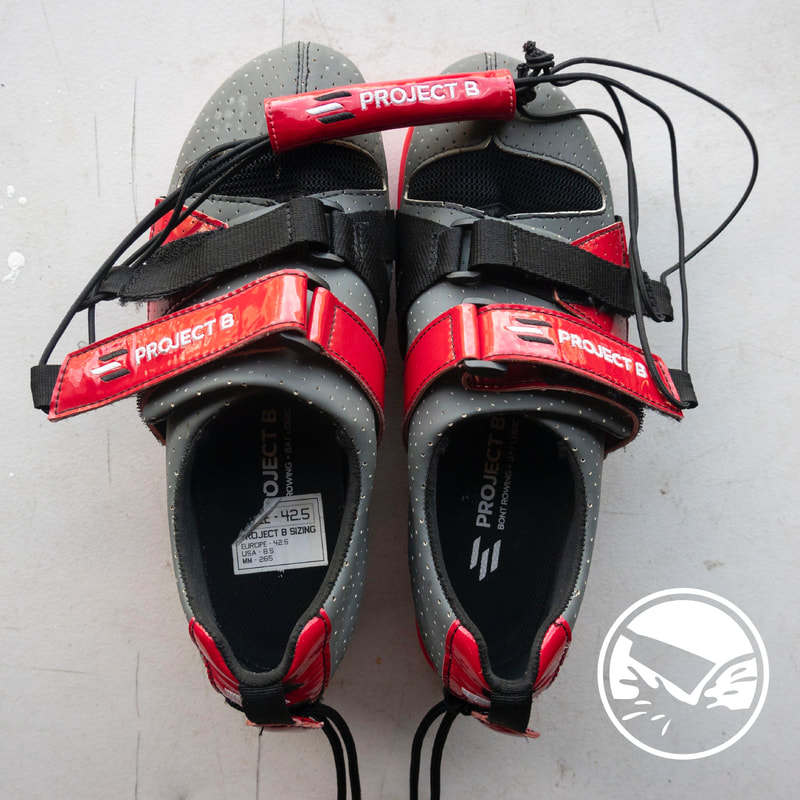
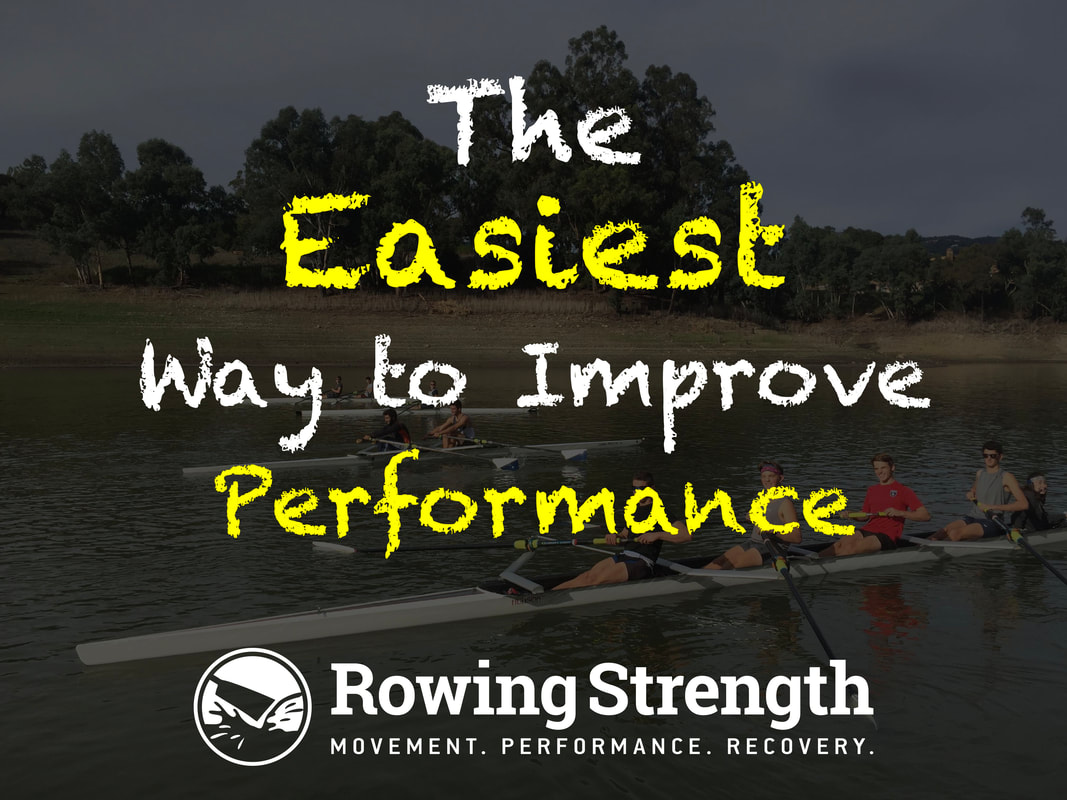
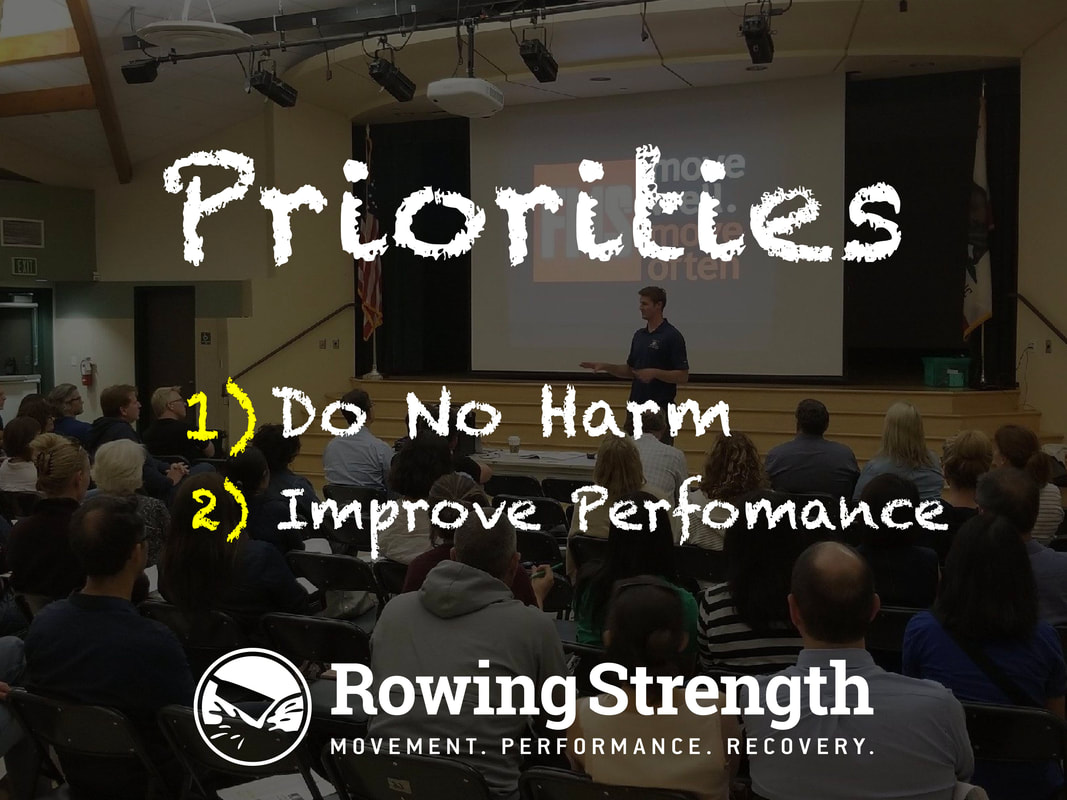
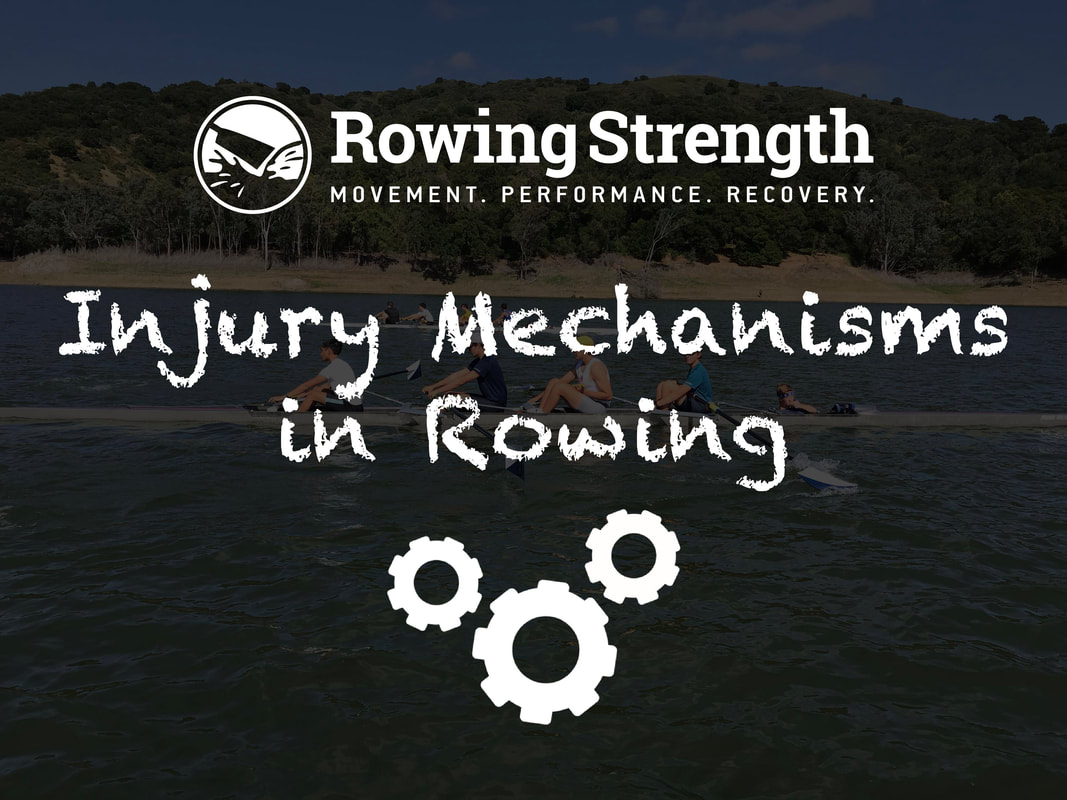
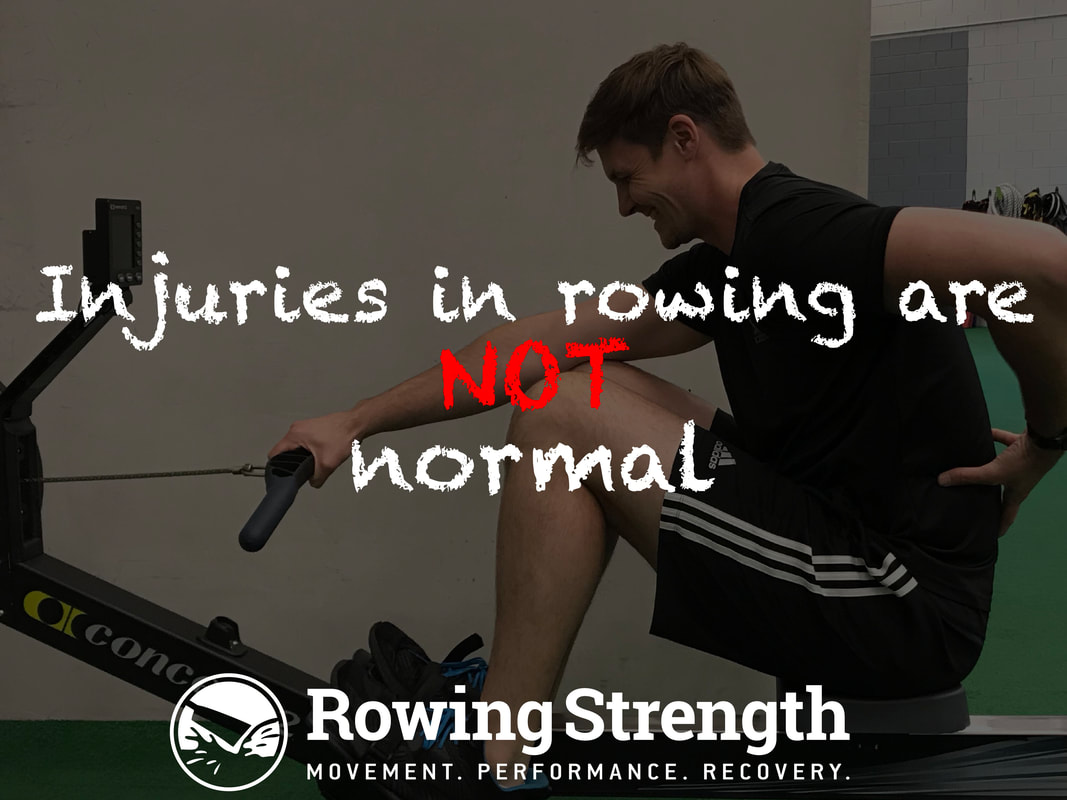
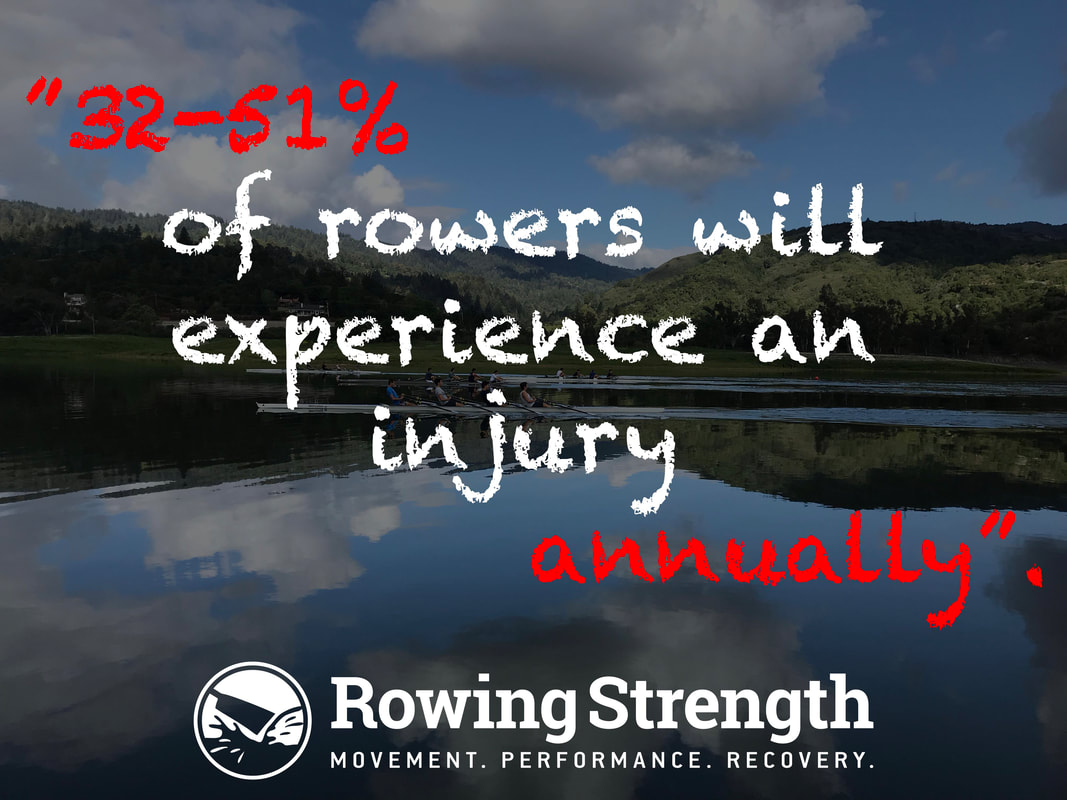
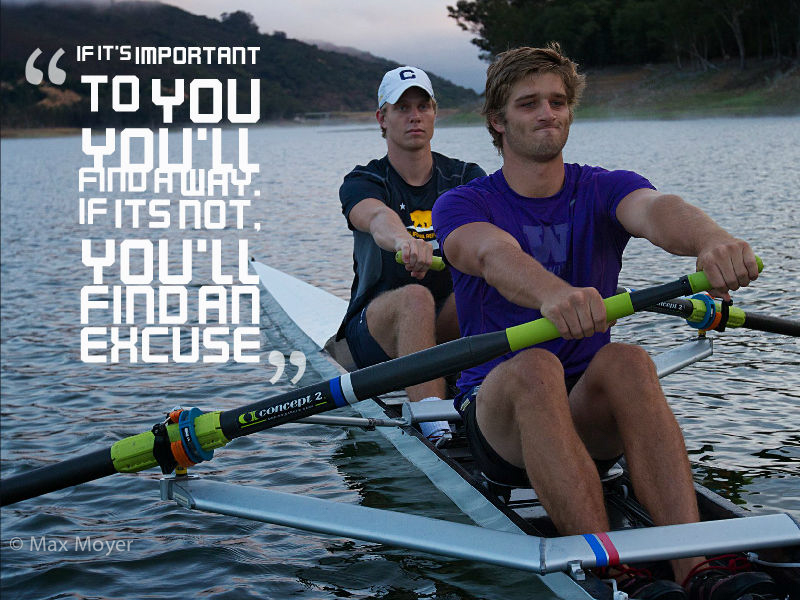

 RSS Feed
RSS Feed